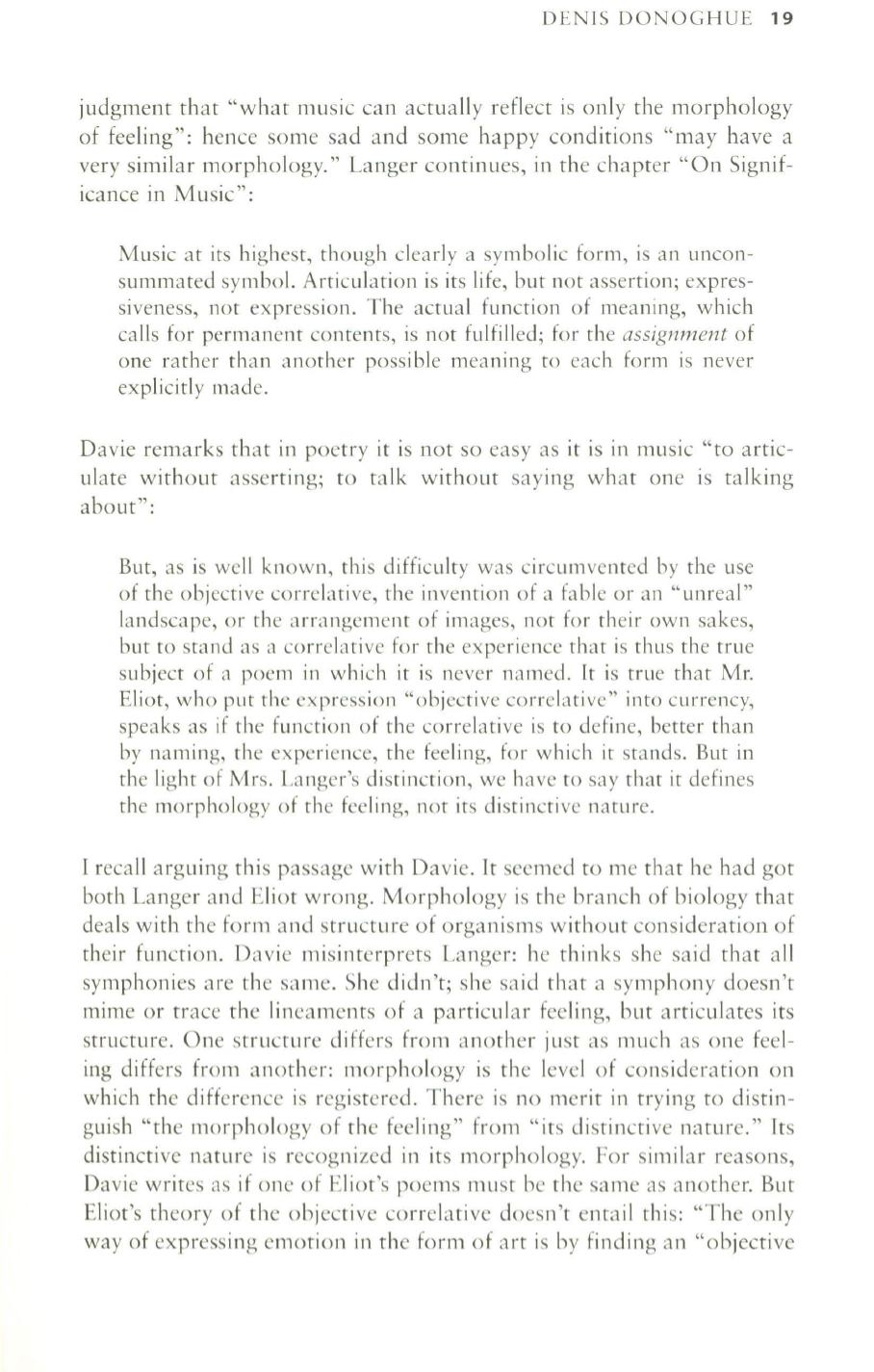
DENIS DONOGHUE
19
judgment that "what music can actually reflect is only the morphology
of feeling": hence some sad and some happy conditions "may have a
very similar morphology." Langer continues, in the chapter "On Signif–
icance in Music":
Music at its highest, though clearly a symbolic form, is an uncon–
summated symbol. Articulation is its life, but not assertion; expres–
siveness, not expression. The actual function of meaning, which
calls for permanent contents, is not fulfilled; for the
assignment
of
one rather than another possible meaning
to
each form is never
explicitly made.
Davie remarks that in poetry it is not so easy as it is in music "to artic–
ulate without asserting;
to
talk without saying what one is talking
about":
But, as is well known, this difficulty was circumvented by the use
of the objective correlative, the invention of a fable or an "unreal"
landscape, or the arrangement of images, not for their own sakes,
but
to
stand as a correlative for the experience that is thus the true
subject of a poem in which it is never named.
It
is true that Mr.
Eliot, who put the expression "objective correlative" into currency,
speaks as if the function of the correlative is to define, better than
by naming, the experience, the feeling, for which it stands. But in
the light of Mrs. Langer's distinction, we have to say that it defines
the morphology of the feeling, not its distinctive nature.
I recall arguing this passage with Davie.
It
seemed
to
me that he had got
both Langer and Eliot wrong. Morphology is the branch of biology that
deals with the form and structure of organisms without consideration of
their function. Davie misinterprets Langer: he thinks she said that all
symphonies are the same. She didn't; she said that a symphony doesn't
mime or trace the lineaments of a particular feeling, but articulates its
structure. One structure differs from another just as much as one feel–
ing differs from another: morphology is the level of consideration on
which the difference is registered. There is no merit in trying
to
distin–
guish "the morphology of the feeling" from "its distinctive nature." Its
distinctive nature is recognized in its morphology. For similar reasons,
Davie writes as if one of Eliot's poems must be the same as another. But
Eliot's theory of the objective correlative doesn't entail this: "The only
way of expressing emotion in the form of art is by finding an "objective


